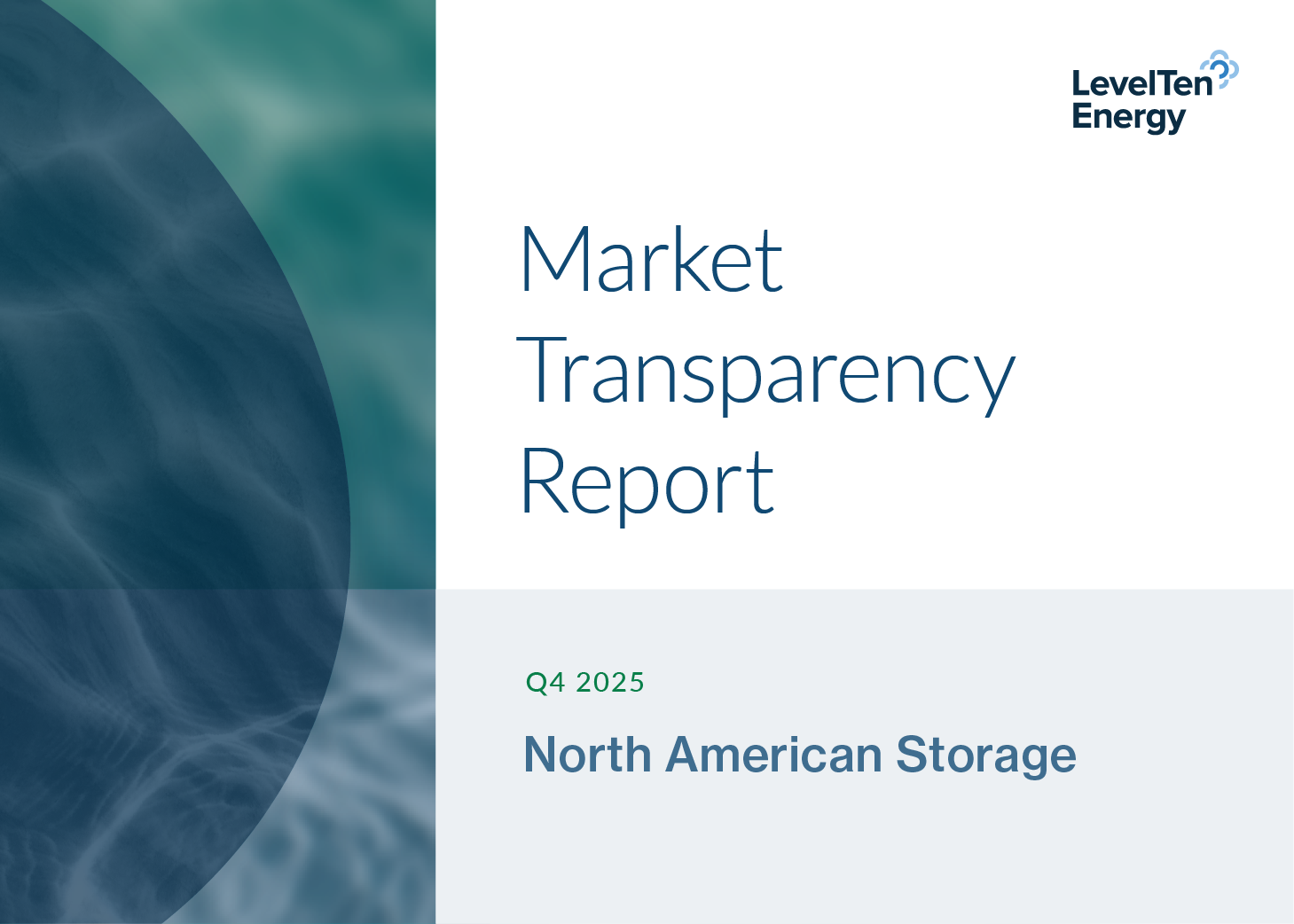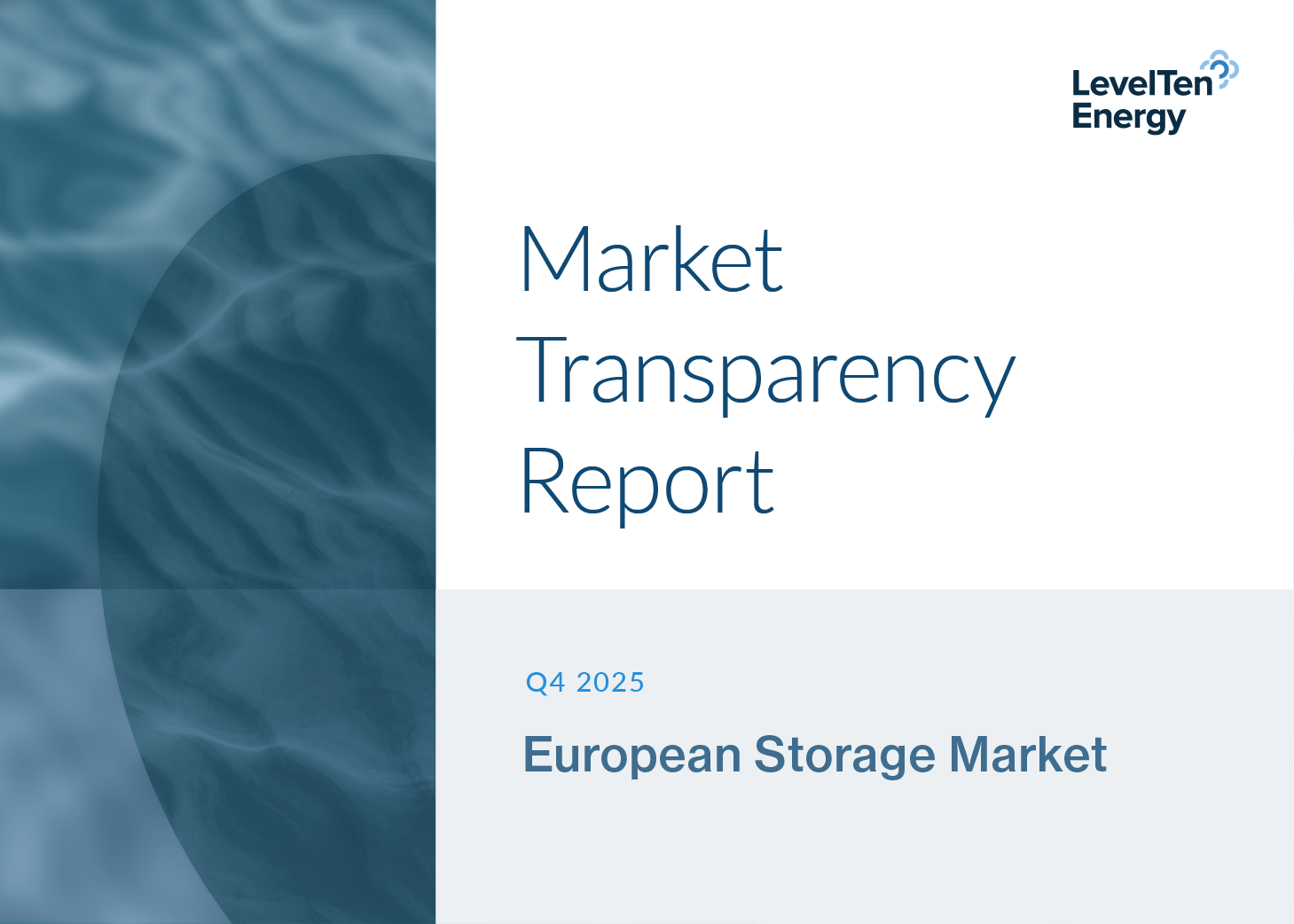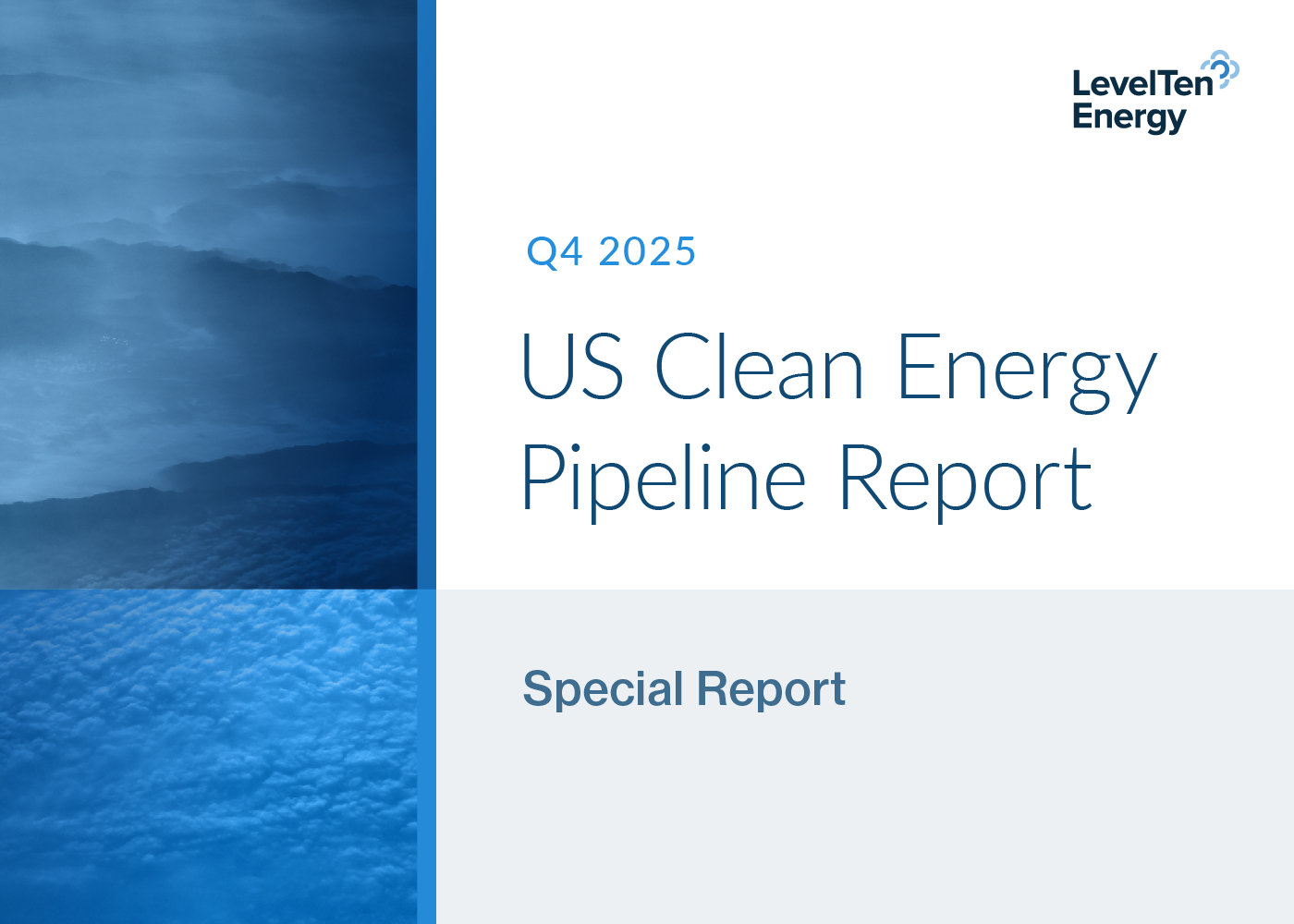Pressure from corporate stakeholders, government directives, and new market developments set to accelerate European procurement in 2020
If you've ever flown into Amsterdam or driven through the Spanish countryside, you've seen the evidence of Europe's investment in renewable energy first-hand: Wind turbines and solar panels have become just as much a part of the landscape as tulips and Osborne bulls. As of 2018, the Europe Union was leading the United States when it comes to the total share of renewable energy in the electric power sector - 31 percent vs. 17 percent, respectively. This is largely thanks to subsidies that made it economically feasible for renewable energy developers to sell their energy to government-controlled utilities. When it comes to corporate procurement of renewable energy, however, Europe falls far behind the U.S.
According to BloombergNEF, in 2018 corporations signed power purchase agreements for 2.3 gigawatts (GW) of renewable energy in the EMEA regions (the majority in Europe), while they signed four times that amount, 9.1GW, in the Americas (the majority in the U.S.). In 2020, that might change.
A confluence of factors has turned all eyes to Europe as the next region to experience explosive growth in corporate PPAs. Following are three reasons LevelTen Energy anticipates major growth in European corporate renewable energy procurement in the year to come, and what's still standing in the way.
1) Corporations Are Demanding It
Corporations with a carbon footprint in Europe are looking for more ways to meet their greenhouse gas emission targets and renewable energy goals. Pressure is coming from all sides, including consumers, management, employees and investors.
For multinational corporations, procuring renewable energy in North America alone is not enough to meet their sustainability goals. To meet their Scope II emissions targets, they need to acquire Guarantees of Origin (GOs), which operate similarly to the United States' Renewable Energy Credit (REC) system, typically in the specific market(s) where they have electricity load.
There are a variety of ways corporations can acquire GOs: RE-Source offers an excellent primer on a range of different options available in Europe. According to the primer, as of 2019, green electricity supply contracts were still the dominant procurement model, but corporates are now turning to other models that allow them to better track the energy they consume and demonstrate to their consumers and investors their commitment to sustainability goals.
As RE-Source describes, "Similar to a private consumer, a corporate can enter a green electricity supply contract with an electricity provider who will 'match' some or all of the electricity with purchases of renewable energy GOs. The supplier may purchase only renewable energy, or it can purchase a mix of conventional and renewable power and will purchase the same amount of energy in renewable GOs to cover the green electricity supply contracts."
Unbundled GOs and green electricity supply contracts enable corporations to acquire GOs without signing a long-term contract. One limitation of these contract forms, however, is that they don't come with an "additionality" claim - that a new renewable energy facility was built as a direct result of the contract. According to RE-Source, "in six Member States and Norway, utilities have a quota for the minimum share (or volume) of renewable energy in final consumption...This makes it difficult to prove if any additional renewable electricity is produced in these countries as a result of entering a green electricity supply contract." Additionality is important to corporations who see the development of new renewable energy projects as a critical component of their long-term corporate sustainability objectives, and to those who see value in demonstrating direct impact.
Another limitation is that traditional utility green tariff offerings will only ever represent a cost to the energy buyer, because the utility typically packages unbundled GOs with the "brown power" required to serve the demand - meaning "green" energy always costs more than "brown." One reason that PPAs (and VPPAs in particular) have been so attractive to corporations is that falling prices from solar and wind farms have brought the price of green power at or below that of brown power in many global markets. A second reason is that, when appropriately structured, VPPAs can provide an opportunity to obtain GOs while also hedging retail energy costs (i.e., as the price of energy rises their utility bills go up, but they also receive more revenue from their VPPA, reducing overall price volatility). This certainly isn't a guarantee, but it's a possibility, unlike in traditional supply contracts.
In short, to meet stakeholder demands and improve their long-term sustainability, corporations are looking for more cost-effective options to obtain GOs and spur the development of new renewable energy projects.
2) Governments Are Enabling It
For years, European countries have had feed-in tariffs and feed-in premiums, which are government incentive programs that make it possible for renewable energy developers to secure the financing they need (sometimes more than they need!) to build new projects:
- Feed-in tariffs (FIT) are long-term contracts that guarantee that renewable energy developers will receive a certain price for their power. These programs establish a fixed electricity price (tariff) - and any new renewable energy project that comes online receives the fixed price. Most tariffs were designed to decrease over time, to encourage technological cost reductions.
- With feed-in premiums (FIP), renewable energy is sold on the electricity spot market and the developers receive a premium on top of the market price, typically with minimum and maximum levels.
In a way, these subsidy programs can discourage corporate PPAs, because they have historically propped up the price of renewable power so much that developers would prefer to participate in the subsidy program than to sign agreements with corporations (who are typically not interested in signing renewable PPAs priced above the corresponding electricity market price). However, with such significant declines in renewable energy prices over recent years, many European countries have begun to aggressively scale back these programs. As GreenTech Media notes, this is causing developers to turn toward corporate PPAs as a means to get their projects financed.
In parallel with declining subsidy programs, the European Union is also taking direct action to mandate increasingly aggressive renewable energy targets. In December 2018, the European Parliament and the Council of the European Union passed a revision to its renewable energy directive, known as RED II, which establishes a new binding renewable energy target for the EU of at least 32% by 2030, and a methodology to allocate that target among the Member States. To meet their assigned quota, the Directive requires each EU memberto identify and remove existing administrative barriers to the development of corporate renewable PPAs, and it strengthens the role of GOs in tracking renewable electricity.
EU countries were required to submit their action plans to meet their assigned targets by December 31, 2019. The renewables industry will be paying close attention to any new policies, regulations and incentives included in those plans (which aren't public yet) that may encourage corporate procurement - particularly in countries with large assigned quotas and declining subsidy programs.
3) It's Now More Feasible Than Ever Before

There are three primary hurdles that corporations face when attempting to procure renewable energy through a PPA:
- Finding a renewable energy project (or several) that are willing to sell the right amount of energy in the right location and at the right time to meet the company's renewable energy goals;
- Evaluating PPA offers to select one with the highest value and least risk (including a portfolio of diversified projects); and
- Successfully navigating the contract negotiation phase, including securing internal approvals across legal, accounting, and treasury functions.
The expansion of LevelTen's PPA Marketplace and procurement platform to Europe helps provide a streamlined approach to clear these hurdles in a faster, safer, more efficient way. Now, corporate buyers can access robust analytics on European renewable energy projects on the LevelTen Marketplace, enabling them to find and choose one or more PPA offers that meet their needs. On the Marketplace buyers can narrow their search based on selection criteria such as contract type (physical/financial), expected GOs volume, projected settlement value and risk, and avoided carbon dioxide equivalent emissions. In addition, with LevelTen's standard PPA contracts and negotiation expertise, corporations can get through the process more quickly, and benefit from a range of available risk-mitigation contractual features.
What's Still Standing in the Way

To-date, most of the PPAs in Europe have been physical - not virtual - and there's a big reason for that. Virtual PPAs trigger derivative accounting under International Financial Reporting Standards (IFRS). This can result in quarterly earnings volatility depending on how market prices move relative to the fixed PPA price, which most companies want to avoid. Physical PPAs, on the other hand, typically don't trigger IFRS derivative accounting treatment. There are contracting and accounting options available to help mitigate these concerns, and features that can reduce earnings volatility by limiting mark-to-market exposure. Corporations should consult with their accounting teams prior to engaging in any PPA (please don't consider this accounting advice).
Corporations that use a lot of power in a single location - like technology companies with large data centers - can benefit greatly from a physical PPA. However, corporations that use small amounts of energy at many different locations, like a retail chain, often find virtual PPAs a more effective way to lower the Scope II emissions caused by their distributed energy use.
When structured properly, virtual PPAs can avoid triggering derivative accounting under Generally Accepted Accounting Principles (GAAP), which means U.S.-based corporations that adhere to GAAP can often use them in Europe without taking on earnings volatility risk. For this reason, we anticipate the European PPA market will likely see a more even distribution of physical and virtual PPAs than in the U.S., corresponding to a broader mix of GAAP- and IFRS-based companies. As mentioned above, LevelTen has specifically adapted its PPA Marketplace and contracting and analytics tools to accommodate and evaluate both.
Additional Reading
Want to learn more? Below are some additional resources on corporate renewable energy procurement in Europe that can help. If you represent a corporation that is interested in procuring in Europe and would like to learn more about LevelTen Energy, please contact us at info@leveltenenergy.com.
- GreenBiz: Clean Energy Deal Tracker: Don't say Amazon isn't doing anything - international PPAs on the rise
- Greentech Media: Europe on the Cusp of a ‘Corporate PPA Revolution'
- IRENA: Corporate Sourcing of Renewables: Market and Industry Trends
- RE-Source: Introduction to Corporate Sourcing of Renewable Electricity in Europe
- RE-Source: Final deal on the Renewable Energy Directive: new momentum for corporate renewable energy sourcing in Europe
- S&P Global: Pioneered in US, virtual renewable deals start to make inroads in Europe
- WBCSD: IFRS Accounting Outline for Power Purchase Agreements
- Wind Europe: Corporate sourcing of renewables key to meeting Europe's 32% renewable energy target






